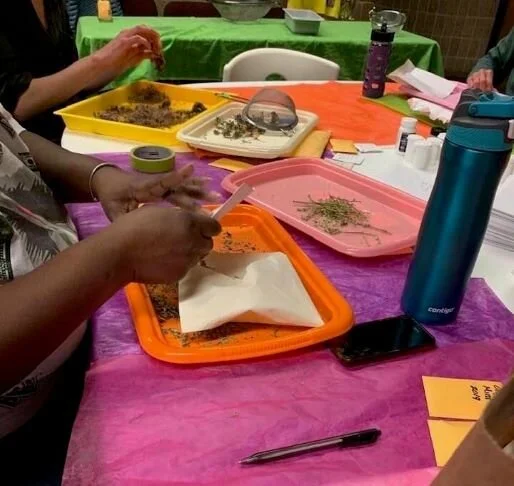Abundance: Simple seed saving for you and your community
By Dawn Lamm, Como Community Seed Library
Have you noticed that some of the #OutPlantTheOutbreak seed packets have the name of a grower and not a commercial company? Many of the varieties that were included in the #OutPlantTheOutbreak seed selections are varieties that have been grown for multiple seasons and their seeds saved by your neighbors. They generously donated these seeds to be shared and grown out again this season by you.
We’d like to encourage you to contribute to this seed sharing cycle or local seed economy by trying your hand at seed saving. The good news is it’s easy and doesn’t require a lot of special equipment, or space in your garden for these recommended crops.
Native Plants
Are you planting for pollinators and other wildlife? Chances are the plants you chose are native to Minnesota. One or two of these plants can produce thousands of seeds that can be saved by simply collecting the seed pods before they are dispersed . If you want to learn more about saving these types of seeds, how to increase the biodiversity in these gardens in our region, and more, we encourage you to join the MN SEED Native Plant Community Science Project.
Peas and Beans
These are probably the easiest cultivated crops to save. Make sure you’ve planted open pollinated and non hybrid seeds. A quick internet check on the variety name of your seeds should give you enough information to know. Also Seed Savers Exchange offers tips about open pollinated seed and related terms. Grow the crop as usual but leave some pods to dry on the plant. When the plant is done producing, pull the plant and place it in a well ventilated, sheltered dry place to further dry down. When the pods are dry enough to shatter, remove the seeds from the pods. Save the ones that look like the ones you originally planted in the spring to share and grow the next season. Seeds are dry enough for storing when you can’t make a fingernail print in the seed.
Lettuce
Lettuce is another easy crop to save, but you may need to add a simple isolation method called a lettuce bag. Lettuce bags are easy to make too if you like a simple DIY project. For more information contact the
Como Community Seed Library. Start with letting one of your plants bolt. Cover it with the lettuce bag when you see the flowers are about to open. After the plant has formed mature pods that are starting to open and the lower leaves have begun to yellow and dry you can remove the plant in the lettuce bag and similar to the peas and beans set aside in a sheltered, well ventilated place to dry for later seed harvest. Again one plant can supply hundreds of seeds for your garden and to share with your neighbors for the coming season.
Lettuce bag being used to isolate lettuce flowers to ensure seeds formed will be true to type.
Tomatoes
Like the other crops suggested for easy seed saving, start with plants and seed that are open pollinated and non hybrid. Tomato seeds are ripe when the tomato is ready for harvest. Choose your best, most perfect earliest tomatoes to save seeds from. This will enforce the best characteristics of that variety for the coming season. Tomato seeds require the wet process for seed harvesting. It’s a bit more involved but a few tomatoes will again yield hundreds of seeds to plant or share in the coming season. Learn more about saving tomato seeds with this webinar from Seed Savers Exchange.
Happy growing this season and we hope you try your hand at seed saving and adding to our local seed sharing economy and seed stories.




